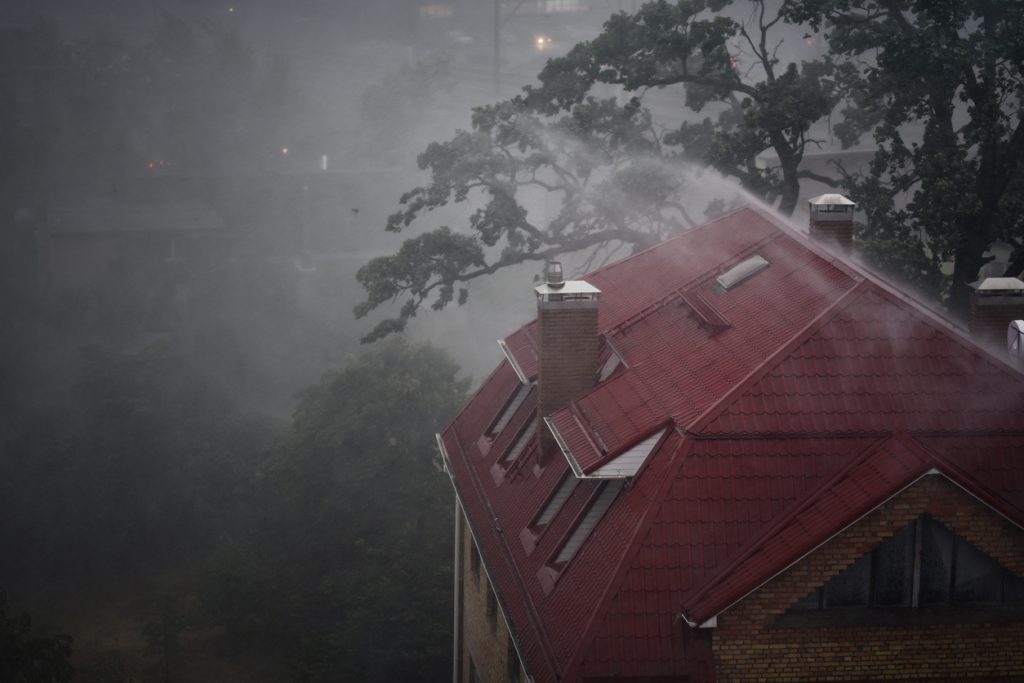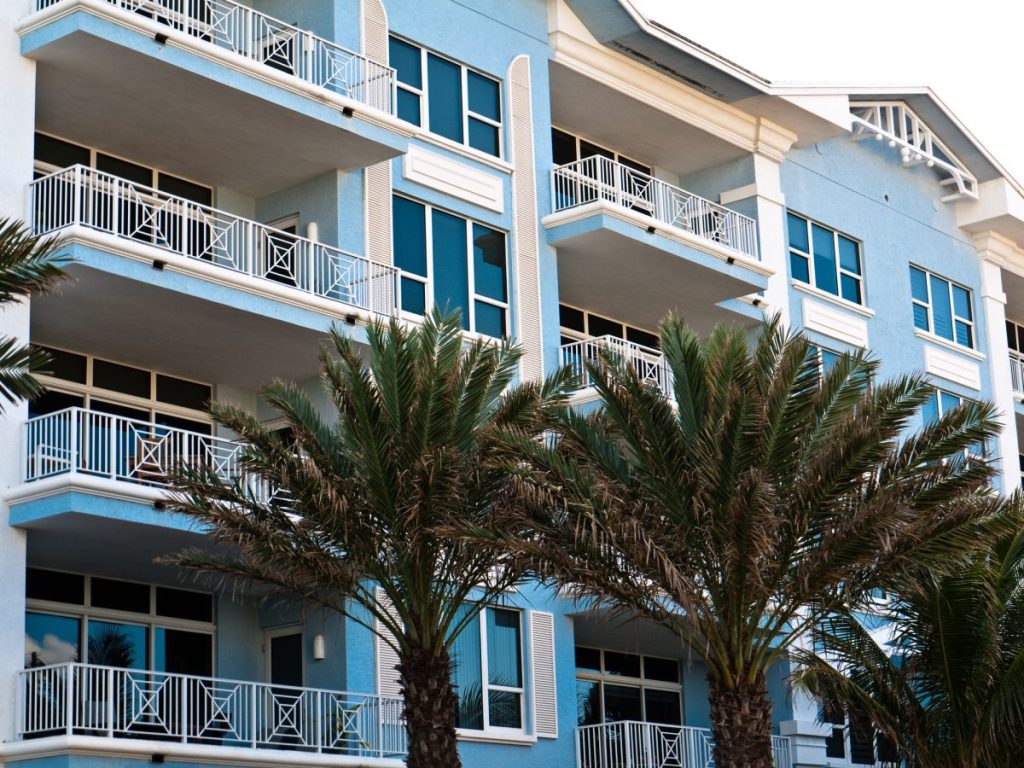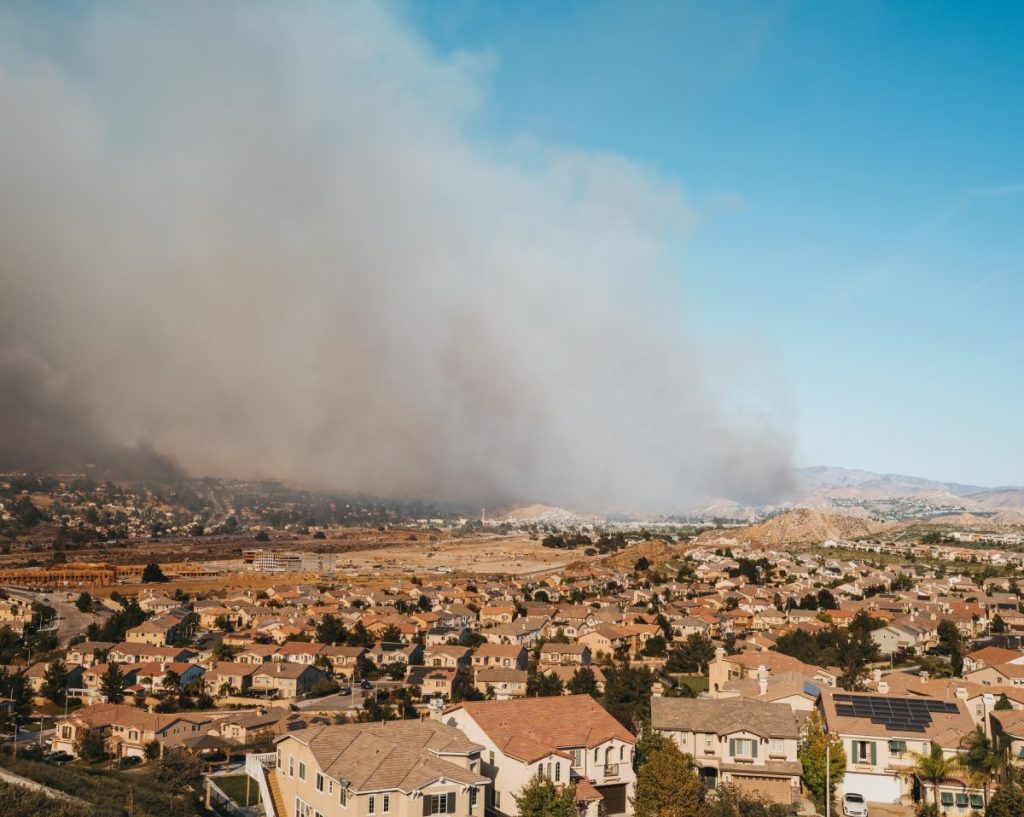Wind-driven rain can cause significant damage to properties, often in unexpected ways. Understanding how insurance policies address this type of damage is crucial. In this blog, we’ll break down the basics of wind-driven rain, how to protect against it, and when it’s likely to be covered by your homeowners insurance policy.
What’s the Difference Between Wind-Driven Rain and Regular Rain?
Normally rain falls more or less straight down to gravity. It mainly affects horizontal surfaces like roofs and the ground. Wind-driven rain, however, is pushed by the wind at an angle, sometimes almost horizontally. This allows it to hit vertical surfaces like walls, windows, and even the underside of roofs. The wind also increases the force of the rain’s impact on these surfaces, making it more likely to penetrate buildings.
How Does Wind-Driven Rain Damage Buildings?
When wind-driven rain gets into a building, it can cause leaks, water damage, even rot and mold growth. Wind-driven rain can damage buildings by:
- Penetrating small openings: Even tiny cracks or gaps in siding, windows, or roofs can become entry points for water when it’s driven by strong winds.
- Overwhelming defenses: Building materials are designed to shed water, but strong wind can push rain past flashing, seals, and other protective measures.
- Saturating materials: Prolonged exposure to wind-driven rain can soak porous materials like wood, leading to rot, mold, and structural damage. Over time, the building’s sheathing and structural framing can eventually deteriorate and lose their integrity.
Do Insurance Companies Cover Wind-Driven Rain?
If wind-driven rain enters your home due to a covered peril like a windstorm or a hurricane that damages your roof or walls, homeowners insurance often covers the resulting water damage. Generally the more sudden and accidental the entry, the more likely it is that your insurance policy covers it. This is because in these cases the windstorm is the primary cause of the damage, and the wind-driven rain is a direct result.
However, if wind-driven rain seeps in through existing cracks, gaps, or due to slow deterioration over time, this is usually considered wear and tear and may not be covered. Insurance companies often argue that the damage occurred due to neglected maintenance, such as missing shingles or deteriorated caulking.
In addition, standard homeowners insurance policies specifically exclude flood damage, even if it’s caused by wind-driven rain. You’ll need separate flood insurance for this.
As always, the specific wording of your policy is crucial. Read it carefully and pay attention to exclusions and limitations related to water damage and wind-driven rain. The more evidence you can provide the insurance company that the wind-driven rain entered due to sudden damage caused by a covered peril, the stronger your case will be.
Can Wind-Driven Rain Cause a Roof Leak?
Wind-driven rain is a common cause of roof leaks. Often it’s associated with intermittent or seemingly unpredictable leaks. Homeowners sometimes notice that their roof will leak, but not always: sometimes leaks will only be noticeable after several days of rain or during particularly bad storms.
This is because the asphalt shingles on a typical roof are designed to repel water that’s falling downwards, but they’re less effective when water approaches from the side during wind-driven rain events. Wind-driven rain can cause water to seep between shingles and slowly makes its way past your roof’s protective materials.
Cracked flashing and deteriorated seals create openings for water to enter. Areas like the edges of the roof, valleys, chimneys, and vents are particularly susceptible to intrusion by wind-driven rain. If you notice missing, damaged, or lifting shingles on your roof or interior water stains near the edges of the roof, along valleys, or by chimneys, these are all common signs of wind-driven rain intrusion.
How Do You Stop Wind-Driven Rain?
There are several ways you can significantly reduce the impact of wind-driven rain on your home. Here are some steps to take:
- Maintain your exterior: Regularly inspect and repair siding, roofing, windows, and doors. Look for cracks, gaps, missing shingles, and deteriorated caulk.
- Seal openings: Seal any gaps or cracks around windows, doors, and other openings with high-quality sealant.
- Extend eaves: Wider eaves provide better protection by directing rainwater further away from the walls.
- Install recessed windows: Setting windows deeper into the wall can help protect them from wind-driven rain.
- Increase overhangs and awnings: These can help deflect rain away from walls and windows.
- Consider your roof design: Steeper roofs shed water more quickly, reducing the chance of wind-driven rain penetration.
- Use landscaping strategically: Trees and shrubs can act as windbreaks, but avoid planting them too close to the house where they could cause damage.
- Storm shutters: In hurricane-prone areas, consider installing impact-resistant storm shutters for added protection.
What Building Materials Are Most Resistant to Wind-Driven Rain?
Certain building materials provide better resistance to wind-driven rain than others. For walls, stone, brick, stucco, and fiber cement siding are all excellent, highly-resistant options when properly installed and maintained. As for your roof, metal roofing or tiles made from clay, concrete, or slate are all solid options. These products come with their downsides, though. Slate tiles are durable and long-lasting, but expensive. Clay and concrete tiles can be brittle and susceptible to damage from impact.
FAQs about Wind-Driven Rain
What Are the Best Windows for Wind-Driven Rain?
Impact-resistant windows typically have two or more panes of glass bonded with a strong interlayer (like PVB or EVA) that holds the glass together even if it cracks. This prevents shattering and keeps wind and water out. Likewise, casement windows – or even better yet, fixed casement windows – crank outward and create a very tight seal when closed, making them excellent at resisting wind-driven rain.
Can Wind-Driven Rain Cause Mold?
Yes, wind-driven rain can cause rot, mold growth, and the slow decay of interior structural elements over time. That’s because wind-driven rain often slowly seeps through cracks and other openings and hinge points, resulting in gradual moisture build up.
At What Wind Speed Does Roof Damage Occur?
At wind speeds of 45 to 50 mph, you might start seeing damage to loose or already compromised roof shingles. This is the threshold where wind can begin to lift and dislodge vulnerable parts of your roof. As wind speeds increase to 50-75 mph, the risk of damage escalates. Shingles can be ripped off, and you might see damage to flashing, gutters, and other roof components.
Wind speeds over 75 mph can cause significant damage, tearing off large sections of roofing and potentially compromising the roof deck. Winds faster than 90 mph pose a severe threat: they can cause major structural damage to the entire roof and potentially the building itself.
Further Resources on Insurance Coverage Law
Navigating the complexities of insurance claims can feel overwhelming. Whether you’re facing unpaid claims or simply filing for the first time, our eBooks equip you with the crucial information you need to advocate for yourself with confidence.
- Filing A Property Insurance Claim
- Insurance Company Response Time
- What To Do When You Have a Denied/Underpaid Claim
- Wildfire Claims
- Flood Claims Handbook
- More Information on Hurricane Deductible and Policy Limits
- Condominium Hurricane Preparedness
Why Merlin?
Are you fighting an insurance company that won’t pay up on claims? With nearly 40 years of practice and $2 billion in recovered claims, our team stands by your side to ensure you can face any insurance challenge with confidence. Contact us today for a consultation, or read more about how we’re your trusted advocate.



